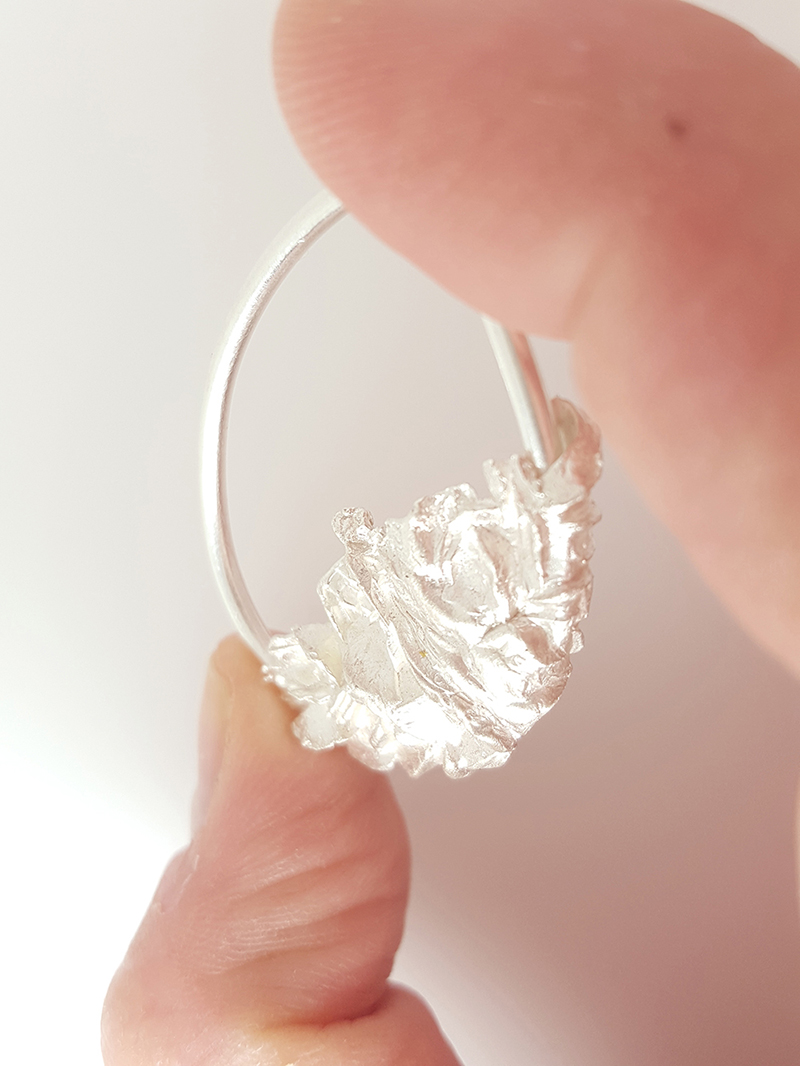Snippets from the Fragments of Iceland Collection.
Follow #fragmentsoficeland on instagram to follow the residency and the process I take in the studio.
Fragments of Iceland - Catalogue Essay
by Gillian Marsden (TAS)
Since 2014, three significant collections within Molin’s body of work are those drawn from separate artist-in-residency programs on remote islands. Fragments of Iceland is a continuation of Molin’s practice of seeking out psychological and geographical remoteness that facilitates a practice of knowing the landscape she temporarily inhabits.
Such artist-in-residencies are an excellent means of creating self-imposed perimeters. The artist works, not unlike any trapped or fenced animal, at testing, prodding the boundaries, getting the feel of their confined space, and seeking out the weakness or strength of their containment. In turn, this environmental constraint appears to facilitate a mental constraint akin to a meditation, a sharpening of the focus; the telescopic lens is tuned to its finest edge. This particular practice of knowledge-gathering takes place and is seen, quite literally, in Molin’s work: the slimmest fragments of earth are brought to the fore. The act of wearing, is an act of magnification.
Scale often works as a metaphor in Molin’s work. Molin writes a brief note; ‘the topographical overview . . . (privilege of air travel), is captured in tear-drop moments, the textures become the edges of the island …’. The fragment, be it lichen, wood, animal remains or stone, becomes an expression of the whole. By its magnification, it becomes a capture of significantly large sections of geography; two tides colliding, glacial rifts.
This capturing of the micro textures of landscape is not unlike the work of makers of portable memories, the miniaturist. In a weird paradox, by drawing these tiny textures into focus, they replicate the very landscape that they are taken from. For some, they are porters of emotional geo-connections.
Given this, these weighty, tiny objects are at risk of unwieldiness but Molin is finely skilled at finding the balance between the fragment and the holding, containing, supporting structures. Also, the reliefs appear fluid. They are allowed to slide about and break through the containment lines of pin or tiny plumbing articles. In other work, the rings and brooches, the ‘human-made’ lines are less visible. The work of time and weather and erosion dominate the form or shape or how the body becomes carriage of the object. But always, the act of wearing amplifies the micro-textures and the idea that an echo of the ancient is often found in worn objects that adorn with pieces of the Earth’s patterned skin: pause on the thought of a human wearing the imprint of a barnacle that was once embedded on the skin of a whale: layers of skin upon skin upon skin.






























